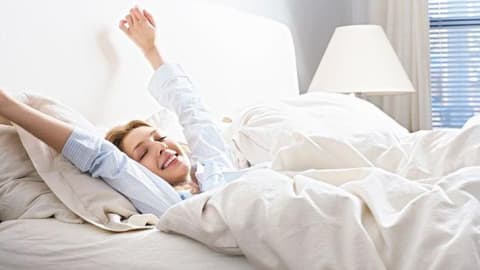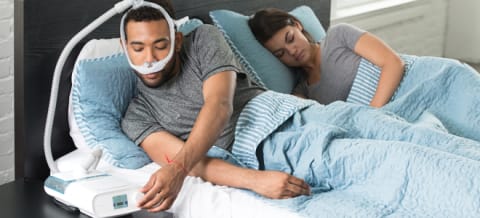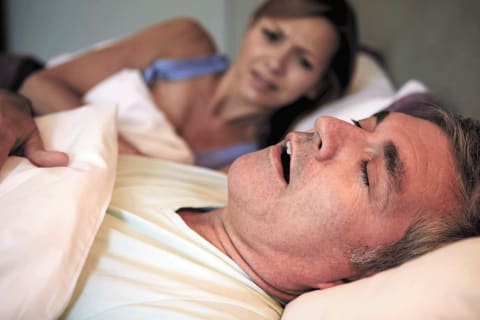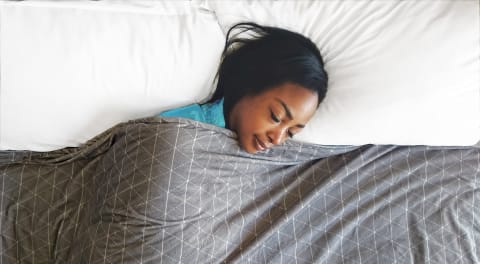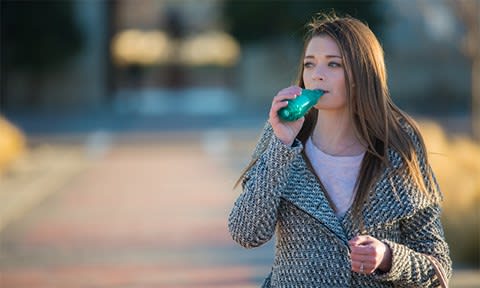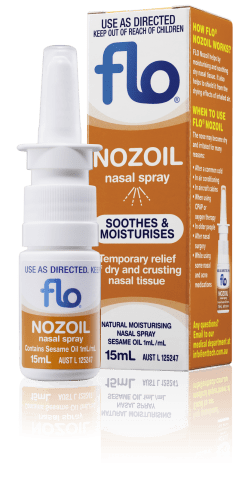CPAP Machine Long Term Side Effects
CPAP Machine Long-Term Side Effects: What You Need to Know
Continuous Positive Airway Pressure (CPAP) therapy is the gold standard for managing obstructive sleep apnea (OSA), and it’s widely used across Australia. But if you’re a long-term user—or just starting out—you might have questions about side effects. Is it safe to use CPAP therapy indefinitely? What happens if your mask leaves marks on your face? And how do you make sure you’re staying healthy while using the machine night after night?
The good news is that CPAP is generally very safe, especially when it’s properly maintained and monitored. This article explores the most common long-term side effects, how to prevent them, and what you can do to stay compliant and comfortable. And if you ever need help adjusting your settings, reviewing your therapy data, or changing your mask, the team at Sove CPAP Clinic is just a phone call away.
CPAP Machines Are Safe for Long-Term Use
Let’s start with some reassurance: CPAP therapy has been proven to be both safe and effective for long-term use. Many people use their machines every night for decades without issues. However, like any medical device, it requires care, cleaning, and regular review to remain safe and effective
Proper management includes routine CPAP mask and machine cleaning, replacing components like filters and cushions as needed, and ensuring your pressure settings are appropriate. For example, if your weight or health status changes, your pressure may need to be re-evaluated.
CPAP machines from trusted brands such as ResMed, Philips, and Fisher & Paykel are built to support long-term use. But no matter the brand, regular check-ups with a sleep professional—such as those offered by Sove CPAP Clinic—are key for long-term success and comfort.
Tip: Don’t wait for a problem to occur before scheduling a review. Annual therapy check-ins can help detect and prevent issues early.
Skin Irritation Is a Common Issue, but It’s Often Easy to Fix
Waking up with red marks, dry skin, or soreness on your face? You’re not alone. One of the most common CPAP side effects is skin irritation, usually due to pressure from the mask or friction from poorly fitted headgear. It’s uncomfortable, but easily managed.
Here are a few things that can cause skin issues:
- Mask straps that are too tight
- Cushions made from silicone (some users may have a sensitivity)
- Poor mask fit causing leaks and friction
- Buildup of oils and sweat that aren’t cleaned off regularly
Solutions include loosening the straps, using mask liners, or switching to a different mask style (e.g. from a full-face mask to a nasal mask or nasal pillows). Some users find that certain brands like ResMed AirFit series or the Philips DreamWear range offer softer, more skin-friendly materials.
Tip: A mask liner acts like a barrier between your skin and the mask. These are especially helpful for preventing pressure marks and are available through Sove CPAP Clinic.
Sinus and Nasal Issues May Stem from Incorrect Pressure or Lack of Humidification
Nasal congestion, dry nose, or sinus pressure are other common complaints, especially in the early weeks of therapy. These issues are often linked to airflow that’s too dry or too strong. Fortunately, most modern CPAP machines include built-in humidifiers and allow for pressure adjustment.
Here’s how to relieve nasal symptoms:
- Use a heated humidifier to moisten the air
- Adjust humidity settings seasonally
- Use a heated tube to prevent condensation in the hose
- Apply saline nasal spray before bed
A well-humidified airflow makes breathing feel more natural and protects the sensitive tissues in your nasal passages. Machines like the ResMed AirSense 10 and F&P SleepStyle include integrated humidifiers with customisable settings.
Tip: If you’re experiencing sinus discomfort, your pressure settings might be too high. Book a consultation with Sove CPAP Clinic to assess whether a small adjustment could improve comfort without reducing effectiveness.
Bacterial or Fungal Infections Are Avoidable with Proper Hygiene
Long-term CPAP users must be vigilant about hygiene. Moist environments—like humidifiers and tubing—can be breeding grounds for bacteria and mould if not cleaned regularly. Poor hygiene can lead to respiratory infections, throat irritation, or even fungal exposure.
Best practices for CPAP hygiene include:
- Daily rinsing and drying of the mask and tubing
- Weekly deep cleaning with mild soap and warm water
- Using only distilled water in the humidifier
- Replacing filters, cushions, and water chambers as recommended
CPAP cleaning wipes and sprays can help with day-to-day care. You can also use a dedicated CPAP sanitiser, although it’s best to check with your provider about compatibility with your device.
Tip: Set a weekly reminder on your phone for CPAP cleaning day. A consistent schedule reduces your risk of infections and keeps your machine in top shape. Sove CPAP Clinic also stocks all the cleaning supplies you need.
ALWAYS FOLLOW THE DIRECTIONS FOR USE. CPAP is used for Obstructive Sleep Apnoea treatment. When considering whether a sleep study or CPAP is right for you, speak to your doctor. Medicare criteria and T&Cs apply.
Frequently Asked Questions
Are headaches a common long-term side effect of CPAP therapy?
Headaches can occur, particularly in the morning, and may be related to pressure settings that are too high or too low. Sinus congestion or mask pressure on the forehead can also contribute. If you frequently wake up with headaches, it’s important to rule out other causes like dehydration or tension headaches—but don’t ignore it.
A CPAP-related headache typically improves after adjustments to mask fit or therapy pressure. Using a heated humidifier may also help if dryness is contributing to sinus pressure. Keep track of when the headaches occur and share this with your CPAP clinician at Sove CPAP Clinic.
If the headaches persist beyond a few days or worsen, book a therapy review. A simple adjustment might be all that’s needed to solve the issue.
Are there risks of facial development issues in children using CPAP machines long term?
CPAP is an essential treatment for children with severe sleep apnea. But proper mask selection, regular follow-up with a paediatric sleep specialist, and frequent mask adjustments are crucial. Masks should be appropriately sized for the child’s face, and pressure settings should be reviewed regularly.
Parents should work closely with their sleep clinic to track fit, comfort, and facial development over time. Sove CPAP Clinic provides paediatric mask fittings and partner referrals for ongoing care.
Does CPAP affect the brain?
There is no evidence that CPAP harms the brain. However, untreated sleep apnea is linked to memory problems and difficulty concentrating. By restoring normal oxygen levels and reducing sleep interruptions, CPAP therapy often improves cognitive function. If you feel more mentally foggy after starting CPAP, it might mean your therapy needs an adjustment. Talk to the team at Sove for a detailed review.
Some people worry about “relying” on a machine, but CPAP is a supportive therapy—it helps restore what your body is missing due to sleep apnea. Long-term use is generally associated with improved mood, better memory, and sharper thinking.
How important is CPAP mask fit and maintenance in preventing possible side effects?
Mask fit is absolutely crucial. A poorly fitted mask can cause air leaks, noise, skin irritation, and ineffective treatment. It can also lead to over-tightening, which contributes to pressure sores and facial marks. Regular maintenance is just as important: a dirty mask can become a breeding ground for bacteria and cause skin infections or respiratory issues.
Schedule regular mask fittings, especially if your weight or facial structure changes. Keep your mask, headgear, and cushion clean, and replace them at the recommended intervals (usually every 3–6 months for cushions and every 6–12 months for masks).
Book a mask fitting with Sove CPAP Clinic to ensure your current setup still meets your needs. Even small adjustments can make a big difference in comfort.
Do I have to use CPAP forever?
Many people benefit from lifelong CPAP use, particularly those with moderate to severe OSA. However, there are cases where therapy may be tapered off—such as after significant weight loss, corrective surgery, or successful use of alternative treatments. That said, stopping CPAP without medical guidance can be dangerous.
It’s important to re-evaluate your condition periodically. This might involve a follow-up sleep study or consultation with your sleep physician. If CPAP is no longer necessary, your doctor will help you transition safely.
Never stop CPAP therapy on your own. If you’re curious about other options, Sove CPAP Clinic can coordinate with your physician to explore them safely.
What are the dangers of stopping CPAP?
The biggest risk of stopping CPAP is the return of untreated sleep apnea symptoms—snoring, choking during sleep, fatigue, and decreased concentration. Over time, this can lead to more serious issues like high blood pressure, heart disease, stroke, and increased risk of accidents due to daytime drowsiness.
Even short breaks from therapy (e.g. on holidays) can bring symptoms back quickly. Long-term discontinuation should only be considered if a sleep study confirms that therapy is no longer required.
If you’re struggling to stay compliant, talk to the Sove team. From mask swaps to pressure tweaks, we can make therapy more manageable for you.

